Picture this: You’re in the middle of a home improvement project, sparks flying as you deftly guide your trusty circular saw through a thick piece of wood. Suddenly, a plume of smoke billows out from the blade, filling the air with a pungent scent. Panic sets in as you frantically try to figure out what has gone awry. Fear not, fellow DIY enthusiast, for today this article embarks on a quest to unravel the mystery of a smoking circular saw. This blog post will delve into the causes behind this alarming phenomenon and discover the solutions that will have you tackling your projects with confidence once again. So, grab your safety goggles, tighten your tool belt, and join the article on this thrilling journey of unraveling the enigma known as a smoking circular saw.
How to use a Circular Saw correctly?
Safely using a circular saw starts with understanding the different components and how each part works. A typical circular saw consists of a blade, handle, motor housing and power cord. The motor powers the blade which is connected to the handle by a shaft.
The next step is to check that your workpiece is secured properly on a stable surface. This is important for safety and accuracy while cutting, as the saw can easily cause kickback or you may lose control of it if it is not secured properly.
Once everything is set up correctly, you can begin your cut by slowly pushing the saw forward against the workpiece using steady pressure. Make sure to keep your hands away from the blade at all times, and keep the saw in contact with the material as much as possible. For a more accurate cut, you can use a guide such as a straightedge to follow while cutting.
Finally, when you have finished your cut make sure to unplug the saw or switch it off. This will help protect you from any accidental starts or kicks back of the blade [1].
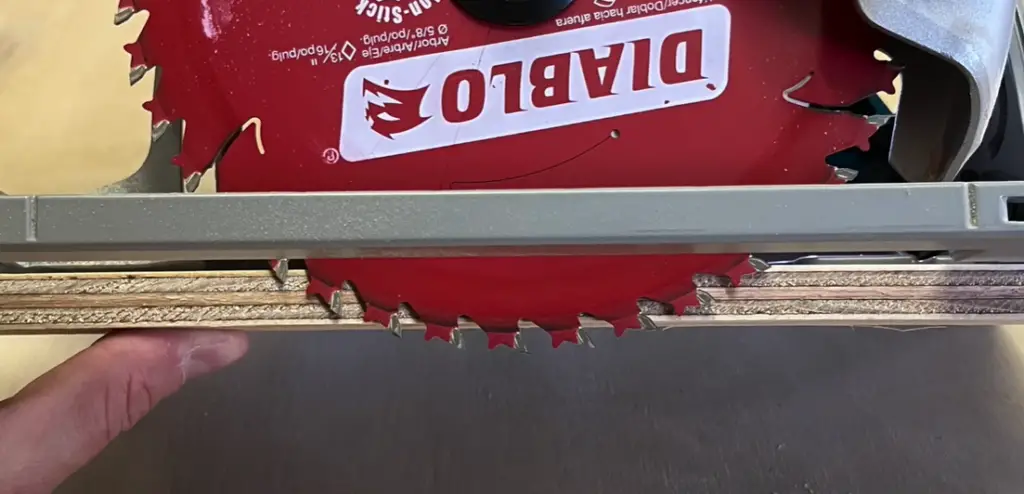
How to Figure Out Why a Skill Saw Blade is Smoking
A Dull Blade Can Cause Smoking
If you notice that your skilled saw blade is emitting smoke, it is a clear indication that the blade may be dull or warped. This can occur when a blade is used for an extended period without being replaced, and it is generally recommended to change blades after approximately ten hours of use. The heat generated by the friction of cutting with a dull blade can not only cause it to smoke but also pose a potential fire hazard. Therefore, it is crucial to take immediate action if you observe smoke coming from the blade. To ensure safety, promptly unplug the saw and carefully remove the blade from the tool.
Incorrect Blade Speed Can Also Cause Smoking
Another reason a skilled saw may smoke is if it is running at too high a speed for the type of material you are cutting. Different materials require different speeds, so make sure to select the correct speed on the saw before making your cut. If the speed is set too high, this could cause the blade to overheat and begin smoking. To avoid this, always double-check that you have selected the correct settings for your saw before beginning a project.
Using an Incorrect Blade Can Also Result in Smoking
When selecting a circular saw blade, it is important to consider the type of material you will be cutting. The wrong blade can cause considerable damage to the saw and result in smoking. For example, a blade designed for cutting plastic or aluminum should not be used when cutting wood as it could become dull very quickly and eventually start to smoke. To ensure safety and better results, always use the correct type of blade for your intended purpose.
A Dirty Skill Saw Blade Can Cause Smoke
If there is a buildup of debris or dust on the saw blade, this can cause it to start smoking. Over time, materials such as wood and metal shavings can accumulate on the blade, causing friction when cutting which can lead to excessive heat build-up. It is important to regularly check and clean your saw blades to ensure they are free from dirt and debris, and to make sure they are operating efficiently. Doing so can help prevent smoking when the saw is being used.
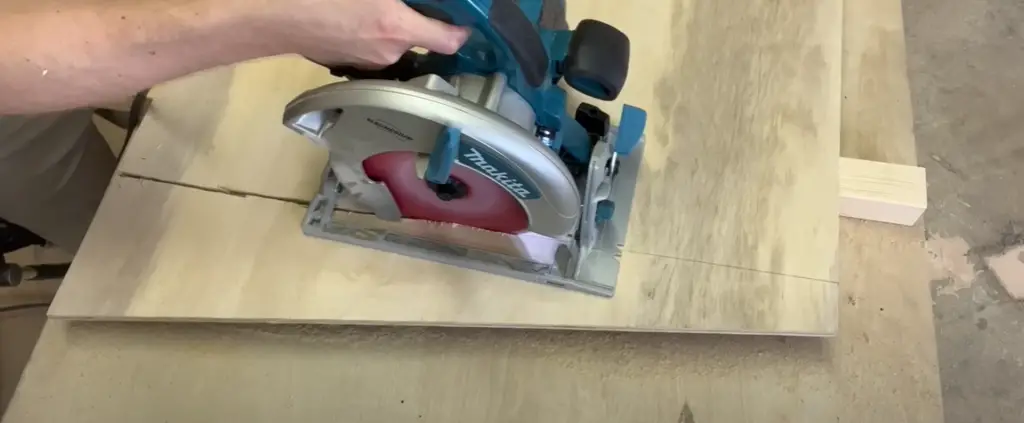
Improperly Set Circular Saw Blade Can Cause Smoking
Finally, a smoking saw blade could be caused by an incorrectly set blade. Make sure that the blade is properly connected to the saw and positioned correctly. If it is not, this can cause friction between the blade and workpiece which can lead to excessive heat build-up and smoke from the blade. To prevent this, always double-check that your circular saw is set up correctly before beginning a project [2].
Things That Cause Skill Saw to Smoke
Cutting Too Slow Can Cause Skill Saw to Smoke
When a skill saw is cutting too slowly, it causes an increase in friction. This extra heat can cause the wood to smoke and even catch fire if enough heat is generated. To prevent this, it’s important to be aware of the appropriate cutting speed for the specific material you are working with. By adjusting the speed accordingly, you can ensure that your skill saw operates smoothly, avoiding any risk of smoking or overheating. This not only keeps your cuts safe but also maintains precision in your woodworking projects, allowing you to create flawless and professional results. So remember, always consider the optimal cutting speed for the material at hand to ensure both safety and quality in your work.
Tension on Skill Saw Blade Can Cause Smoke
When a skilled saw blade is tightened excessively, it can cause the blade to heat up rapidly, leading to the emission of smoke from the tool and even charring of the wood or material being cut. This not only affects the quality of the cut but also poses safety risks. On the other hand, blades that are properly tensioned are crucial for ensuring the optimal performance and longevity of your tool, providing a safer and more efficient cutting experience. Taking the time to maintain the appropriate tension in your saw blade is an essential practice for any woodworking enthusiast or professional.
Old Saw Blades Can Cause Smoke
Old saw blades can often be the culprit for an increased amount of smoke during cutting operations. Over time, the blade will dull and cause more heat to be generated due to extra friction. This usually results in considerable smoke emission and a rougher cut than usual. To get the best performance from your tool and maintain optimal safety, it’s important to replace old saw blades regularly. Doing so will ensure the highest quality of cuts and help you complete your projects with precision.
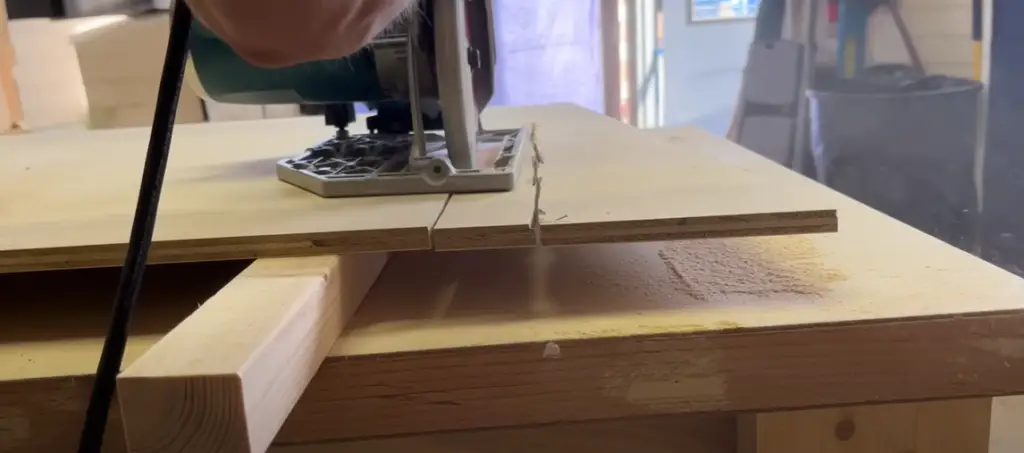
Different Types of Wood Causing Skill Saw to Smoke
The skill saw is one of the most popular woodworking tools on the market. It’s versatile and powerful enough to tackle a wide variety of projects. However, using the wrong type of wood can cause it to smoke heavily, so users need to know what types of wood they should avoid when using their skill saw.
In addition to softwood, there are a few other wood types that should be avoided when using a skill saw. Plywood is often composed of multiple layers of different woods, which can cause it to smoke heavily when cut with a skilled saw. Old and decaying wood also should not be used as it may contain hidden nails or metal shards that could damage the blade or create dangerous flying debris.
Finally, it is important to pay attention to the grain of the wood when using a skilled saw. Cutting across the grain will cause more smoke and dust than cutting along it, so make sure that you are always cutting with the grain whenever possible. With these tips in mind, you’ll be able to use your skill saw safely and effectively without producing too much smoke.
How to Tell When Skill Saw Motor Has Failed
When using your skill saw, it’s important to know when the motor has failed. This can be difficult to detect since most of the time the failure is gradual and usually isn’t obvious until after it occurs. Fortunately, there are several signs that you can look for that will help indicate if your motor is failing or has failed altogether.
One sign that your motor is failing will be a decrease in power. This can be noticed by the saw not performing as well or cutting slower than it used to. There could also be an increase in noise coming from the saw, which indicates that something is wrong with the motor. If this happens, you should check the brushes inside your saw and see if they need to be replaced. If the brushes are worn out, it could be causing the motor to overheat and eventually fail.
Another indication of a failing saw motor is when you start to smell burning from the saw. This is usually an indication that something is wrong and you should stop using it immediately as this can lead to further damage. It is also important to check for any signs of smoke coming from the saw, as this is a sign that something has gone wrong and needs to be addressed.
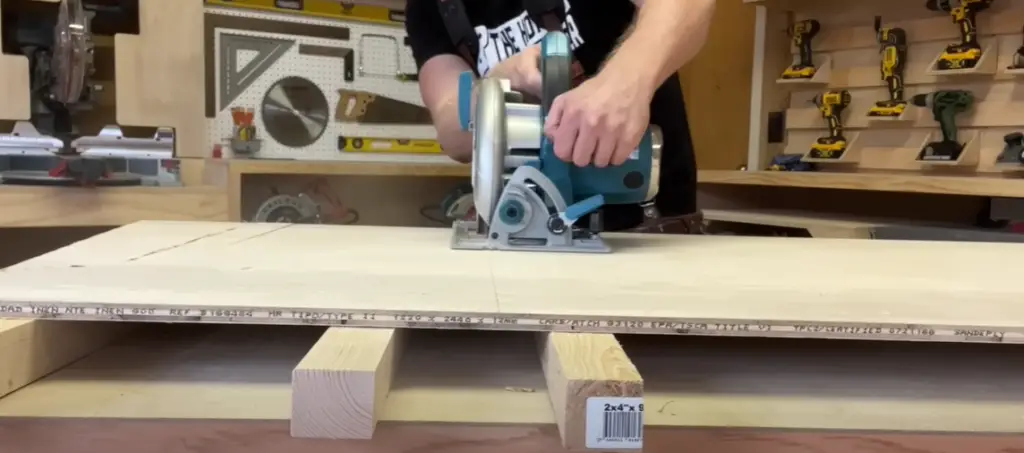
Finally, if you notice any sparks coming from the saw or its motor, it’s time to stop using it. Sparks indicate that electricity is arcing which can cause serious damage or even fires in some cases. If sparks are present, find an expert to inspect the saw motor and determine if it needs to be replaced or repaired.
Following these tips will help you detect when a skilled saw motor has failed, allowing you to take action before further damage occurs. Remember that regular maintenance is key for ensuring your skill saw remains in top condition and extends its lifetime as much as possible. With the right attention, your skilled saw should be able to handle all of your woodworking needs.
What are other problems that can happen with a Circular Saw?
Aside from smoking, circular saws can be dangerous for a variety of reasons. The blade is exposed and the user must take care to wear protective gear such as goggles or face shields when operating the tool. If operated improperly, it can kick back and cause serious injury. Additionally, airborne particles created by the sawdust can cause respiratory issues if proper dust masks are not worn.
It is also important to make sure the saw blade is securely attached and in good condition before use. Not doing so can result in the blade becoming loose or broken during operation, causing serious injury and damage to those nearby. Finally, circular saws are loud machines that must be used with caution in order to avoid permanent hearing loss.
Taking all of this into account, it is essential to use a circular saw safely and responsibly. Make sure you read the manual thoroughly before using one and follow all safety guidelines provided. If any problems occur, be sure to turn off the tool immediately and seek professional assistance if necessary. By doing so, you can ensure that your experience with circular saws is both safe and enjoyable.
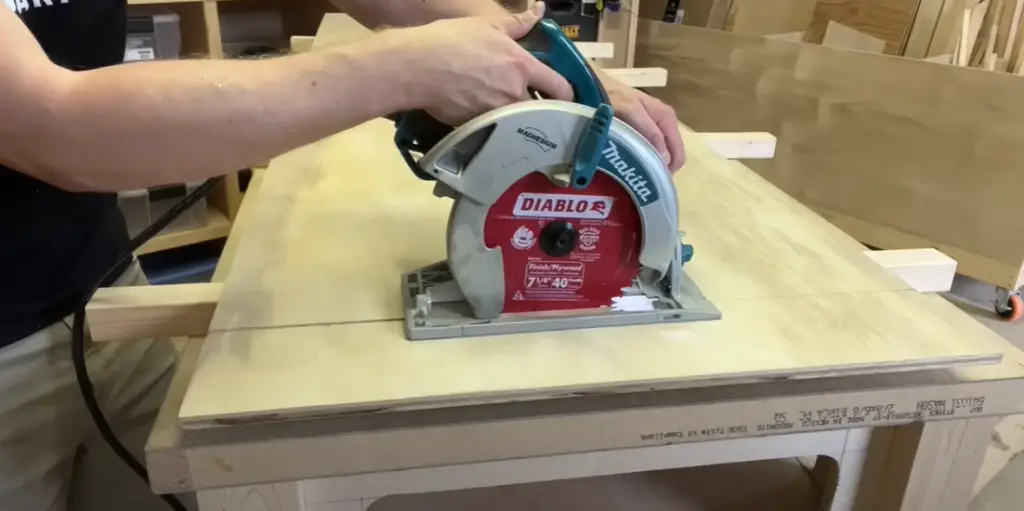
What are the Benefits of Owning a Circular Saw?
Circular saws offer many benefits to both professional and amateur users. They can provide a fast, clean cut through wood, plastic, metal, and more. This makes them invaluable for carpentry projects such as framing or trim work. Additionally, they have adjustable blades and settings which make them versatile for a variety of applications.
Circular saws are also relatively low-maintenance tools that have long life spans. They require minimal upkeep beyond cleaning the blade and replacing it as needed. Additionally, many models are lightweight and compact, making them easy to transport and ideal for job sites or other remote locations.
Finally, circular saws can help save time and money since they are so efficient. By utilizing the right blade for a particular material, users can complete their projects quickly and with less waste. This makes them attractive to DIYers who are looking to get the most out of their tools without breaking the bank.
Overall, circular saws offer a variety of benefits that make them a great choice for a wide range of projects. Whether you are a professional or an amateur, they can provide you with power and versatility that will help make your job easier. Just be sure to use them responsibly and take all safety precautions when operating the tool [3]!
FAQ
Why is my circular saw burning the wood?
Burning wood with your circular saw is usually caused by either a dull blade or too much pressure being applied. If you are using a new saw, make sure the blade is sharp and not damaged in any way. You also want to reduce the pressure when cutting so that the blade does not cause friction and burn the wood. Additionally, some types of wood can be difficult to cut and may create more friction which can cause the wood to burn. In these cases, it is important to take your time and use a sharp blade for the best results.
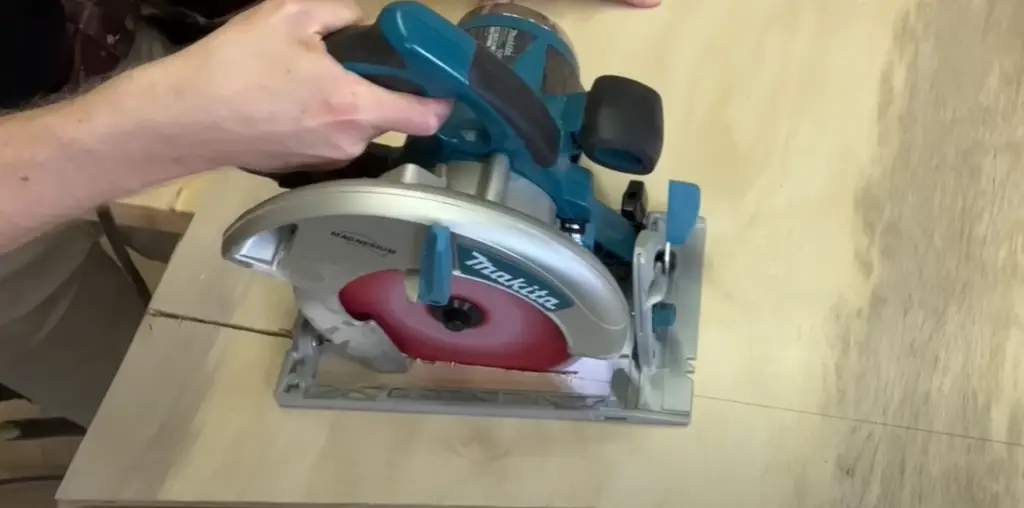
What are some tips for preventing burning when using a circular saw?
To prevent burning when using a circular saw, it is crucial to ensure that the blade is sharp and in good condition. A dull blade can cause friction, leading to overheating and burning of the wood. Additionally, using light pressure while cutting and taking your time will help prevent overheating. It is also worth noting that some types of wood may require lubrication during cutting to reduce friction and minimize the risk of burning. Lastly, maintaining an appropriate cutting speed is essential; cutting too quickly can generate excessive heat and result in wood burning. By following these tips, you can effectively prevent burning and achieve clean, precise cuts with your circular saw.
What type of blade should I use when cutting hardwood?
When cutting hardwoods, you want to make sure your saw is equipped with a high-quality carbide-tipped blade. A carbide-tipped blade will help provide clean and accurate cuts and reduce burning or chipping that can occur with lower-quality blades. Additionally, you may want to consider using a blade with fewer teeth (around 24 or more) as this will help reduce the risk of burning due to excessive heat generated by too many cutting edges. Finally, it is important to keep in mind that hardwoods require more effort when being cut and the blade should be sharpened regularly for optimal performance.
Why can a circular saw overheat?
Circular saws can overheat for a few reasons, including dull blades, incorrect pressure applied during cutting, and excessive speed when cutting. A dull blade causes more friction and heat build-up during use which can lead to overheating. Additionally, if too much pressure is applied while cutting this can also cause the blade to overheat due to increased friction. Finally, if you are cutting too quickly there is more heat generated by the blade which can result in overheating. It is important to keep these factors in mind when using your circular saw to ensure that it does not overheat.
Should you oil a circular saw?
It is not necessary to oil a circular saw, as most modern models are designed to be self-lubricating. However, lubrication can help the blade stay cooler while cutting and therefore reduce the risk of burning or chipping in some cases. In these instances, it’s best to use a light machine oil or mineral oil on the blade before starting your cut. Additionally, make sure to wipe away any excess oil from the saw before using it so that you don’t accidentally damage the wood. Following these tips will help ensure that your circular saw is properly lubricated and working at its best.
What safety measures should I take when using a circular saw?
When using a circular saw, it is important to take safety precautions to reduce the risk of injury or damage. Make sure you are wearing protective gear such as goggles and ear protection when operating the saw. Additionally, keep your hands away from the blade while in use and always keep a firm grip on both the saw and the wood being cut. Furthermore, make sure that you are following any instructions given regarding lubrication, pressure, and speed to avoid overheating or damage. Lastly, always unplug the circular saw when not in use and store it properly to ensure that it is kept in good condition. By following these tips and taking proper safety measures, you can help make sure that you are using your circular saw safely and correctly.
Why is my circular saw sticking?
Your circular saw can stick if the blade is dull or damaged, you are applying too much pressure while cutting, or the wood being cut is damp. It is important to make sure that your blade is sharp and in good condition so that it will move freely through the wood. Additionally, reducing the amount of pressure applied while cutting will help reduce friction and therefore reduce sticking. Lastly, if the wood being cut is damp this can also cause sticking and should be dried before cutting. Following these tips will help ensure that your circular saw moves smoothly through the wood without sticking.
What types of materials can a circular saw cut?
Circular saws are excellent tools for working with wood and other materials such as plastic, metal, and even stone. The type of blade you choose will depend on the material being cut; for instance, a carbide-tipped blade is best when cutting hardwoods. Additionally, some saws are equipped with blades that are designed specifically for certain materials such as wood or metal to ensure clean and precise cuts. Lastly, it is important to note that many circular saws can only cut materials up to a certain thickness; always check the manufacturer’s guidelines for your particular model before attempting to cut thicker materials.
Useful Video: Saw Blade Skill Saw or Band Saw smoking during cutting? Clean it off
Conclusion Paragraph
If a circular saw is smoking, it is important to take action right away. It could be an indication that something is wrong with the saw and requires attention. Burning smells coming from a circular saw may mean that something needs to be replaced or adjusted. If you experience any of these signs while using your circular saw, don’t hesitate to contact a professional to get help diagnosing and repairing the issue. By following these steps, you can prevent further damage and help keep your saw running safely and efficiently.
References:
- https://www.wikihow.com/Use-a-Circular-Saw
- https://thediyplan.com/skill-saw-smoking/
- https://toolsterritory.com/circular-saw-advantages-and-disadvantages/






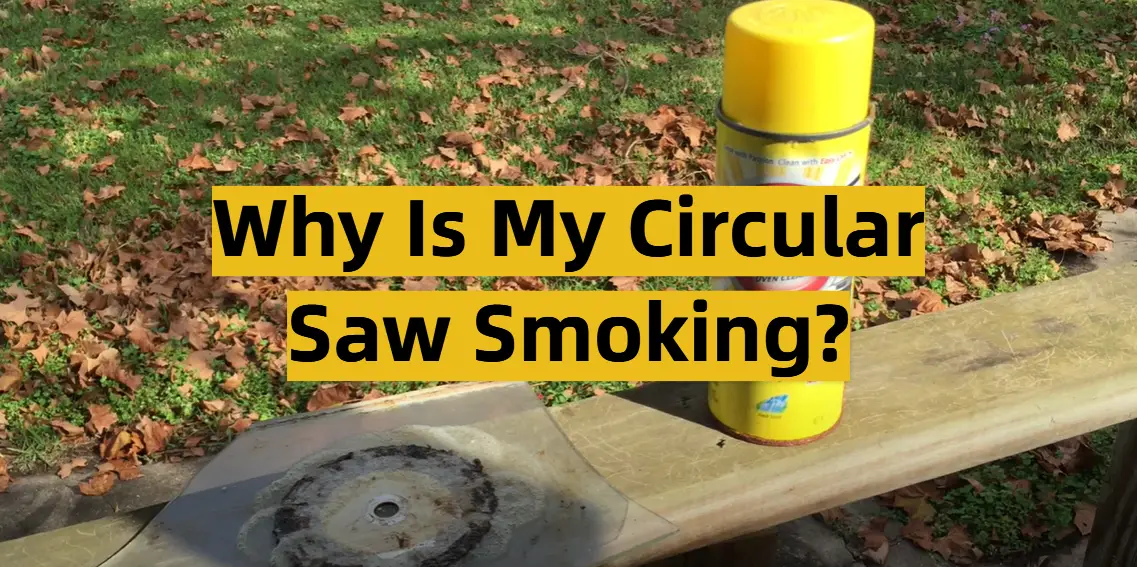







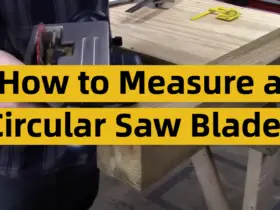
Leave a Reply